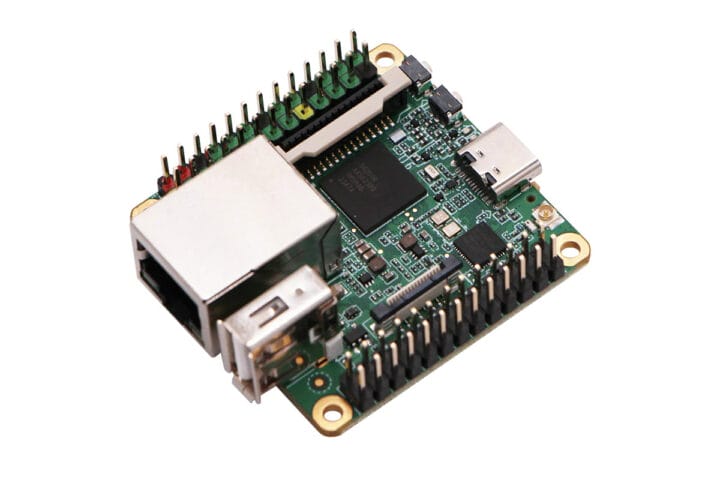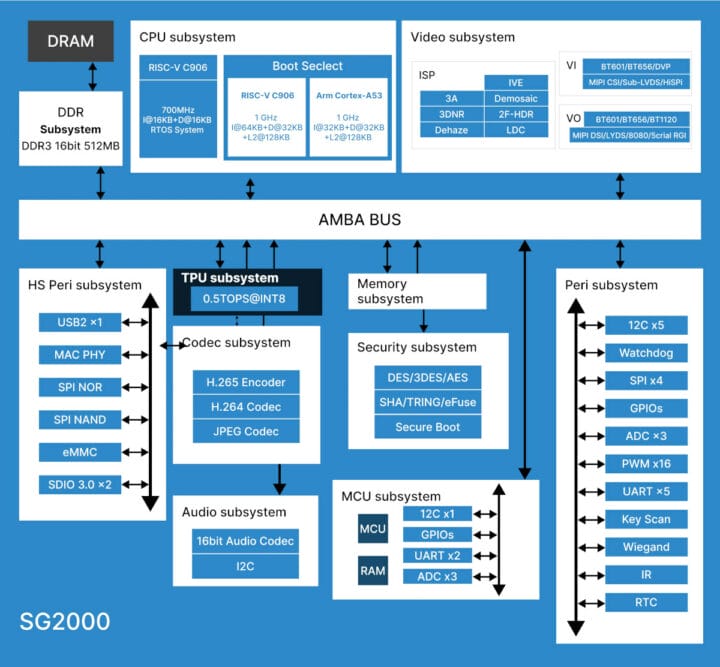25

Shenzhen MilkV Technology’s Duo S is a tiny SBC based on the 1 GHz Sophgo SG2000 Arm Cortex-A53 and RISC-V SoC with 512MB DDR3 (SiP), Fast Ethernet, WiFi 6, and Bluetooth 5 connectivity, and a switch to select Arm or RISC-V architecture before powering the board. We already had covered SG2002 Arm/RISC-V boards with 256MB RAM, namely the LicheeRV Nano and Duo 256M, but for people needing more memory, the Duo S provides another option that also features two 2-lane MIPI CSI connectors, a USB 2.0 host port, and two 26-pin headers for expansion. Its form factor reminds me of FriendlyELEC’s NanoPi NEO and family powered by Allwinner processors that were introduced a few years ago. Duo S specifications: SoC – SOPHGO SG2000 Main core – 1 GHz 64-bit RISC-V C906 or Arm Cortex-A53 core (selectable) Minor core – 700 MHz 64-bit RISC-V C906 core Low-power core – 25 to [...]
The post Duo S RISC-V/Arm SBC features Sophgo SG2000 SoC, Ethernet, WiFi 6, and Bluetooth 5 connectivity appeared first on CNX Software - Embedded Systems News.







